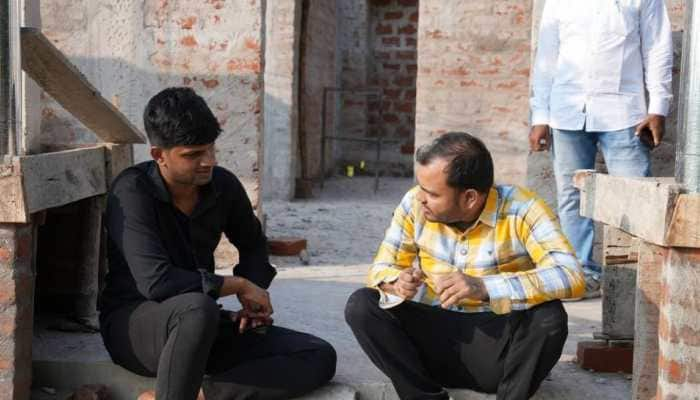Uttarakhand's Char Dham Project: Why Some Call It 'A Road To Disaster'?
The Char Dham project is been blamed for the Silkyara tunnel collapse near Barkot, which trapped 41 workers under the debris for seventeen days
Trending Photos
)
New Delhi: The Char Dham project is a mega infrastructure project that aims to connect four Hindu pilgrimage sites in the Himalayan state of Uttarakhand: Yamunotri, Gangotri, Kedarnath and Badrinath. The project, which was launched in 2016 by Prime Minister Narendra Modi, involves widening and upgrading about 900 km of roads, building dozens of bridges and tunnels, and cutting through fragile mountain slopes. The project is estimated to cost Rs 12,000 crore and is expected to be completed by 2024.
The government claims that the project will boost tourism, improve border security, and provide all-weather connectivity to the pilgrims who visit the holy sites every year. However, the project has also faced severe criticism from environmentalists, activists, and experts who warn that the project will have disastrous consequences for the ecology and the people of the region.
The Char Dham project is been blamed for the Silkyara tunnel collapse near Barkot, which trapped 41 workers under the debris for seventeen days. The tunnel, part of the Char Dham road project in Uttarakhand, was buried under tons of debris and mud, with no sign of life from the worker. The project has also been linked to increased risk of flash floods and glacial lake outbursts. The project has also been challenged in the Supreme Court for violating the environmental norms and the recommendations of various committees and experts.
The Ecological Impact Of Char Dham Project
The Himalayas are one of the most biodiverse and geologically sensitive regions in the world. They are home to thousands of species of flora and fauna, many of which are endemic and endangered. They also provide vital ecosystem services such as water, soil, and climate regulation to millions of people downstream. The Himalayas are also prone to natural hazards such as earthquakes, landslides, flash floods, and cloudbursts, which are exacerbated by human activities such as deforestation, mining, and construction.
The Char Dham project poses a serious threat to the Himalayan ecology and the people who depend on it. According to a report by the Wildlife Institute of India, the project will affect 31,029 trees, 33 wildlife corridors, and 216 water bodies. The project will also fragment the habitats of several endangered species such as the snow leopard, the Himalayan brown bear, the musk deer, and the red panda. The project will also increase the risk of landslides, soil erosion, and sedimentation, which will affect the water quality and quantity of the rivers that originate from the glaciers in the region.
The project has also been challenged in the Supreme Court for violating the environmental norms and the recommendations of various committees and experts. In 2018, a petition was filed by an NGO called Citizens for Green Doon, alleging that the project did not have the required environmental clearance, forest clearance, and wildlife clearance. The petition also claimed that the project did not follow the guidelines of the Ministry of Road Transport and Highways, which prescribed a maximum width of 5.5 meters for the roads in the hilly areas.
The Supreme Court appointed a High-Powered Committee (HPC) to examine the impact of the project and suggest measures to mitigate the adverse effects. The HPC, which consisted of 26 members from various fields, submitted its report in September 2020. The report stated that the project was "ill-conceived" and "unscientific" and recommended that the road width should be restricted to 5.5 meters, except at some strategic locations.
The report also suggested that the project should avoid cutting through the wildlife corridors, the landslide-prone areas, and the river banks. The report also warned that the project could trigger a disaster similar to the 2013 Kedarnath tragedy, which killed thousands of people and caused widespread damage.
However, the government rejected the HPC report and filed an affidavit in the Supreme Court, seeking permission to widen the roads to 10 meters. The government argued that the narrower roads would compromise the safety and security of the pilgrims and the army personnel. The government also claimed that the project had followed all the legal and environmental procedures and had taken adequate steps to minimize the ecological impact.
On 14 December 2021, the Supreme Court delivered its judgment on the case, allowing the government to widen the roads to 10 meters in three stretches: Rishikesh to Mana, Rishikesh to Gangotri, and Tanakpur to Pithoragarh. The court also directed the government to follow the HPC recommendations in the remaining stretches and to ensure that the project does not cause any irreversible damage to the environment. The court also ordered the government to constitute an oversight committee to monitor the implementation of the project and to submit periodic reports to the court.
Reactions To The Supreme Court Judgment
The Supreme Court judgment has evoked mixed reactions from different stakeholders. The government had welcomed the judgment and expressed its commitment to complete the project as soon as possible. The government has also assured that the project will not harm the environment and will benefit the people of the region.
However, the environmentalists and the activists have expressed their disappointment and dismay over the judgment. They have argued that the judgment has ignored the scientific evidence and the expert opinions and has given a green signal to the destruction of the Himalayas. They have also questioned the rationale and the feasibility of the project and have warned that the project will have irreversible and catastrophic consequences for the ecology and the people of the region.
The project also raises some fundamental questions about the vision and the values that guide the development of the Himalayas. What kind of development do we want for the Himalayas? Who decides the development priorities and the trade-offs? How do we balance the needs and the aspirations of the present and the future generations? How do we respect and protect the diversity and the dignity of the Himalayan ecology and the people?
Stay informed on all the latest news, real-time breaking news updates, and follow all the important headlines in india news and world News on Zee News.
Live Tv







)
)
)
)
)
)
)
)
)
)
